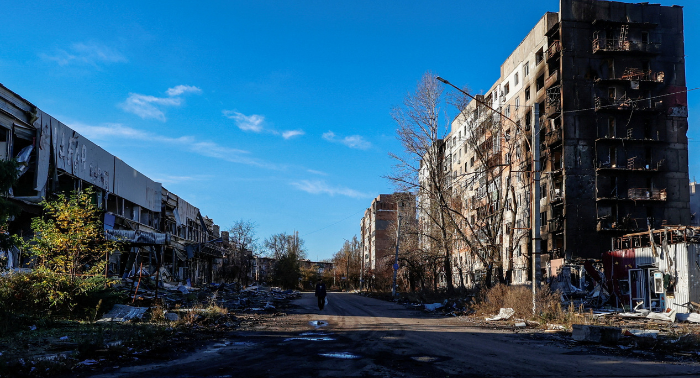In the darkness of late night, a Ukrainian soldier, known by his call sign “Taxist,” navigated an armored Humvee jeep along a barely visible asphalt road near Avdiivka, a town in Ukraine’s eastern Donetsk region. Taxist, a volunteer in his 50s from the Skala assault battalion and a former taxi driver, maneuvered the vehicle with its lights off under light rain, traveling along the last accessible road to Avdiivka.
Avdiivka, once a thriving coal center, has now become emblematic of the protracted conflict between Ukraine and Russia, with no significant progress from either side for over a year. Ukrainian troops prefer to travel this route at dawn or in dim light to evade the Russian artillery and drones lurking nearby.
During one such journey, Taxist narrowly avoided a collision with another Ukrainian military vehicle emerging from the shadows. “He could have flashed his headlights; it’s hard to see anything at this hour,” Taxist remarked after the close call.
Reaching downtown Avdiivka’s Khimik district by 6:30 am, the Humvee passed through areas marked by rows of ruined buildings. The eerie quiet was occasionally broken by distant and nearby explosions, with the occasional sound of birds and dogs. Avdiivka has endured relentless assaults from Russian forces attempting to encircle and capture it, reducing its population from 30,000 pre-war to just about 1,350 residents.
Despite Russian control over significant portions of the town near Donetsk, Ukrainian forces continue to defend an area stretching roughly five miles northwest of the city. In Avdiivka, a solitary humanitarian aid center operates from the basement of an abandoned building, providing a space for residents to gather, warm up, charge their phones, and converse over coffee. The center, lit by a generator, is a refuge for around 15 people, along with four cats and three dogs, all bearing the signs of exhaustion.
Among the visitors were Oksana and her husband, cycling in from the eastern part of Avdiivka, a region less impacted by bombings. Oksana, a former executive at Ukraine’s largest coking and chemical plant spanning 850 acres in the northern part of the town, lamented the reduction of the plant’s workforce from 4,000 to just a few. The plant, now in proximity to Russian positions, is still defended by Ukrainian soldiers. Oksana, approaching her 50th birthday, is determined to stay in her home despite the risks. “Why should I start again from scratch somewhere else?” she questioned.
Similarly, 65-year-old retiree Oleksandre Makarov, a former plant worker living in a nine-story block in the Khimik district, relies on humanitarian aid and a wood stove for survival. Despite worsening conditions since Oct. 10, with intensified bombardment, Makarov remains steadfast in his decision to stay in his hometown.
Later in the morning, as explosions continued outside the shelter, Taxist prepared for his return journey, opting for a longer but safer route to avoid the more dangerous areas. He successfully returned to the Skala battalion’s headquarters, which had recently captured five Russian soldiers.
One of the captives, 25-year-old Nikolai, a former factory worker with only a week of military training, shared his experience under the scrutiny of his captors. He recounted the constant bombardment faced by his group of about 30 Russian soldiers, leading to several deaths and injuries, and his eventual surrender.
The Skala battalion commander, also named “Skala,” spoke of the heavy losses inflicted on the Russian army and their occasional successes against Ukrainian defenses. He emphasized the strategic preservation of his troops, given the limited manpower compared to Russia. “Each of my attacks must be justified,” he stated.




